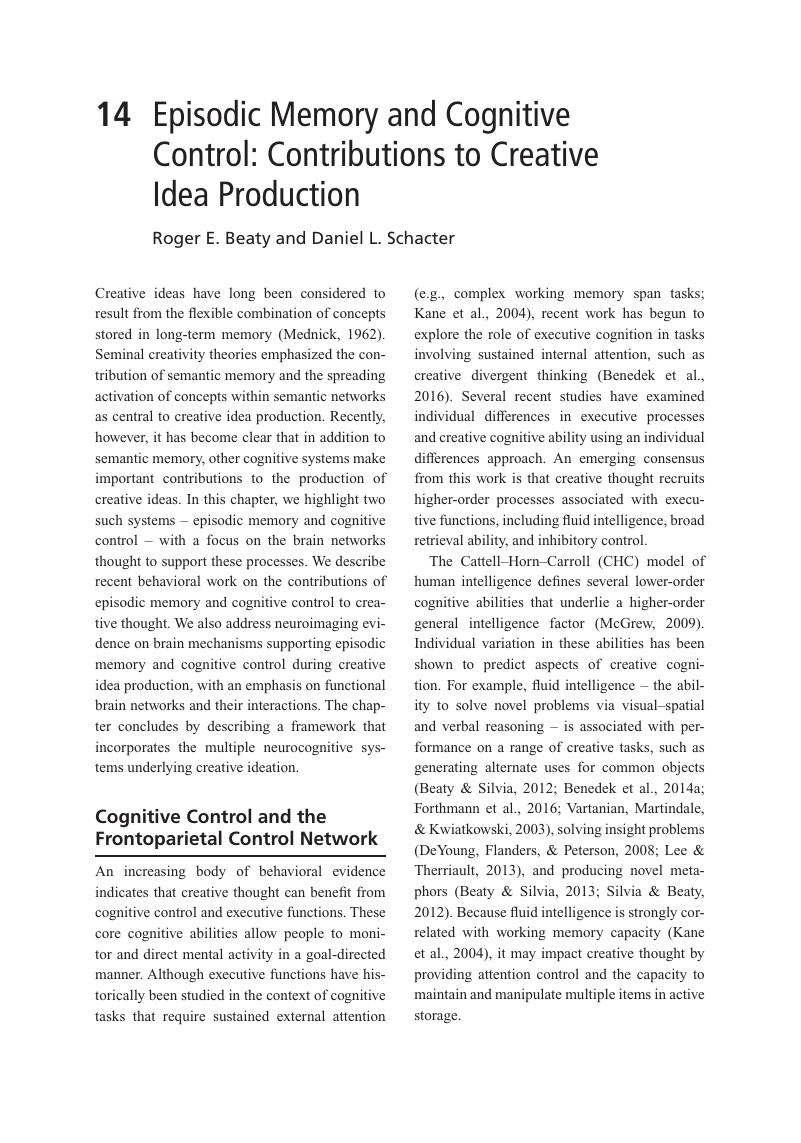Book contents
- The Cambridge Handbook of the Neuroscience of Creativity
- The Cambridge Handbook of the Neuroscience of Creativity
- Copyright page
- Contents
- Figures
- Tables
- Contributors
- Acknowledgments
- Introduction
- Part I Fundamental Concepts
- Part II Pharmacology and Psychopathology
- Part III Attention and Imagination
- Part IV Memory and Language
- 13 Going the Extra Creative Mile: The Role of Semantic Distance in Creativity – Theory, Research, and Measurement
- 14 Episodic Memory and Cognitive Control: Contributions to Creative Idea Production
- 15 Free Association, Divergent Thinking, and Creativity: Cognitive and Neural Perspectives
- 16 Figurative Language Comprehension and Laterality in Autism Spectrum Disorder
- Part V Cognitive Control and Executive Functions
- Part VI Reasoning and Intelligence
- Part VII Individual Differences
- Part VIII Artistic and Aesthetic Processes
- Index
- References
14 - Episodic Memory and Cognitive Control: Contributions to Creative Idea Production
from Part IV - Memory and Language
Published online by Cambridge University Press: 19 January 2018
- The Cambridge Handbook of the Neuroscience of Creativity
- The Cambridge Handbook of the Neuroscience of Creativity
- Copyright page
- Contents
- Figures
- Tables
- Contributors
- Acknowledgments
- Introduction
- Part I Fundamental Concepts
- Part II Pharmacology and Psychopathology
- Part III Attention and Imagination
- Part IV Memory and Language
- 13 Going the Extra Creative Mile: The Role of Semantic Distance in Creativity – Theory, Research, and Measurement
- 14 Episodic Memory and Cognitive Control: Contributions to Creative Idea Production
- 15 Free Association, Divergent Thinking, and Creativity: Cognitive and Neural Perspectives
- 16 Figurative Language Comprehension and Laterality in Autism Spectrum Disorder
- Part V Cognitive Control and Executive Functions
- Part VI Reasoning and Intelligence
- Part VII Individual Differences
- Part VIII Artistic and Aesthetic Processes
- Index
- References
Summary

- Type
- Chapter
- Information
- The Cambridge Handbook of the Neuroscience of Creativity , pp. 249 - 260Publisher: Cambridge University PressPrint publication year: 2018
References
- 15
- Cited by

